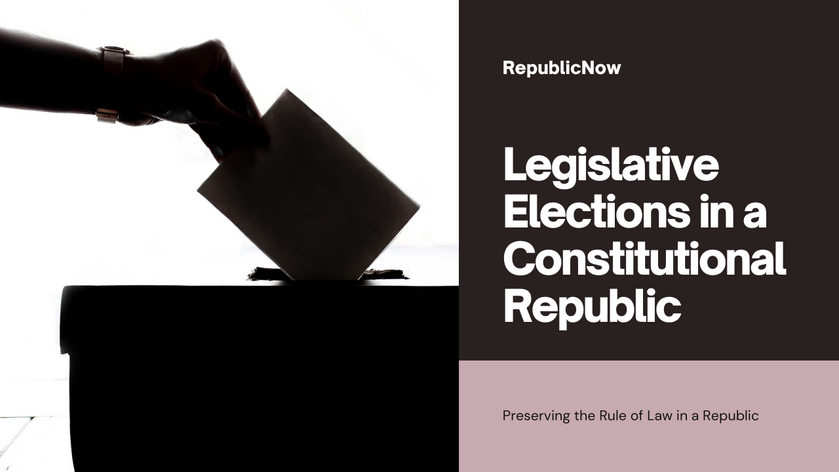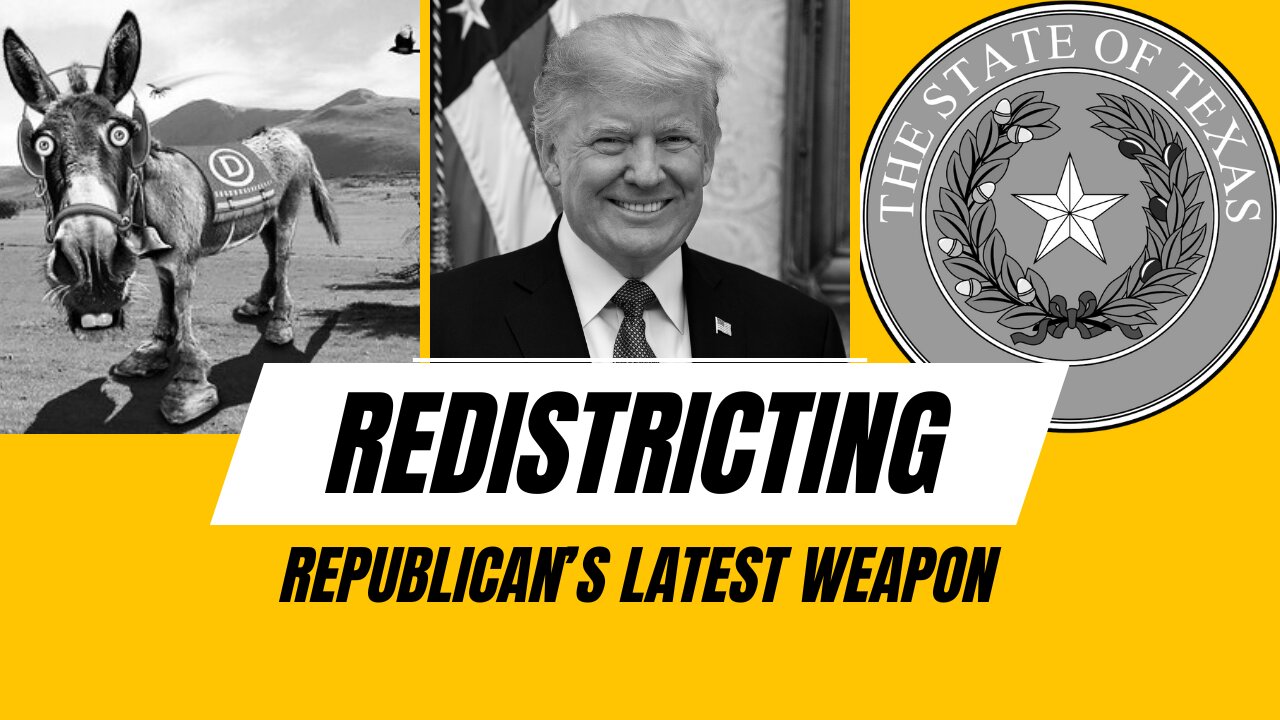The most glaring weakness in our Constitutional republic has always been how to manage legislative elections. In fact that’s been the most thorny problem in any country having an elected legislature, with elections for the chief executive running a close second. The United Kingdom finally redrew their Parliamentary district map in 1831 after decades of neglect left many districts unpopulated. (That neglect also left the burgeoning cities of the Industrial Revolution underrepresented or unrepresented.) Israel elects all members of its Knesset at-large. (That’s one way to solve the districting problem: abolish the concept district!) This is an outrage, and derives from the overrating of a principle, not of a republic, but of democracy. This problem has one solution: remind ourselves that we are a republic, and approach legislative elections accordingly.
Legislative elections problem one: the lower house
The U.S. House of Representatives presents the most obvious problem with managing legislative elections. Under the Constitution, the federal government must number the “population” every ten years. (The Census has another weakness relating to the counting of illegal immigrants on one hand, and convicts on the other. That’s a discussion for another time, but certain House Members definitely know about it.) Since 1911, the House has had a permanent size of 435 Members. So the Clerk of the House, on information from the Census Bureau, decides how many Representatives each State may send. The Constitution specifically says each State must have at least one Representative. (In 1959 the House set a precedent of temporarily increasing its size whenever Congress admitted new States. The size goes back down to 435 with the next Census.)
State legislatures draw district maps, unless the State has only one Representative. The problem always has been that the Constitution provided no principle for deciding where to draw those lines. That’s how Elbridge Gerry’s party could draw a district having the vague outline of a salamander – hence Gerrymander. But even they did not go so far as modern “gerrymandering” does today. They draw district maps without regard to city limits, county lines, or the like. In the worst example, one legislature drew a district that roughly followed the service roads of a major Interstate Highway. They drew it that way for one reason only: to create a Black majority district.
Creeping proportional representation
That last part comes from one of the worst mandates of the Sixties-era Voting Rights Act. Someone decided that Blacks as a group were entitled to representation in proportion to their numbers. For reasons of lack of imagination – or maybe no one daring argue against it – the United States Supreme Court has upheld this inherently unjust principle. Proportional representation has no place in the Constitution, and never had. The State of Israel made the bad decision to award “slots” for at-large candidates to their various Parties. The Voting Rights Act does the Israelis one better: an attempt at proportional ethnic representation. Proponents of that system might as well abolish Congressional districts and award “slots” for representation by ethnic group!
This is the end result of a principle called “one person, one vote.” Now that was supposed to mean that no one person has more than one vote. But it has come to mean that all Representatives from a State must each represent the same number of people. And if that means drawing districts that cross city limits and county lines, so be it!
Something’s wrong there. Representatives should properly represent groups of governing sub-units. Again, remember what a republic is. A republic is not merely a “representative democracy.” It is a multi-level government with each level managing one level down, from national government to individual adult. Legislative elections should respect that; sadly they do not.
The latest story along that line
The history of our country since the 2020 Census has seen a raft of federal cases regarding representation in Congress. In Moore v. Harper, the Speaker of the North Carolina House, frustrated with a North Carolina Supreme Court insisting on the proportional ethnic representation model, argued that the Elections Clause of the Constitution vested redistricting in the legislature, and that neither governor nor court may interfere. He lost that case for two reasons:
North Carolina’s voters changed their Supreme Court radically so that they accepted Moore’s map, and
Moore’s lawyers performed badly at oral argument, and the Moderate Bloc decided his “independent legislature theory” was crazy.


The South Carolina district map is the subject of another major court case. Yesterday a newsletter calling itself Capital B posted a column illustrating the flawed thinking on legislative elections. The South Carolina NAACP challenged a map that, they argued, didn’t give Blacks their due in representation. A district court ruled against them, and at least for the 2024 election cycle, the present map stays. (They probably told the NAACP they waited too long to challenge the map.)
Here is the quintessential illustration of that columnists thinking on proportional ethnic representation:
Without a fair map, it would be enormously difficult for Black voters to elect a representative who has their interests at heart and who would fight for them on issues ranging from education to criminal justice to health care.
Excuse me? What kind of special favor are you demanding? Change “Black” to “White” and someone would likely attribute that to “white supremacists,” if such people still exist.
But again: that comes of thinking of our society as a democracy, not a republic.
Legislative elections problem two: the upper house
We turn next to the United States Senate. One of the worst Amendments the Constitution has is Amendment XVII, providing for popular elections of Senators. What happens when a Senator dies, or resigns, or gets expelled? Under the Constitution, a State legislature may empower a governor to appoint an Interim Senator. That appointee serves until the State can hold a special Senate election.
Not all State legislatures have “empowered” their governors to appoint Interim Senators. Kentucky did – but then, at the urging of Sen. Mitch McConnell (R-Ky.), the Kentucky legislature decided to limit that power. The problem: Kentucky has a Democratic Governor (Andy Beshear) and a Republican-controlled Legislature. That Legislature is not only Republican-controlled, but veto-proof. When Sen. McConnell started showing his age, the solons did not want Andy Beshear to appoint an interim Senator of his choice. So they passed a law directing the executive committee of the Party that had the now-absent Senator to supply three names. The governor would then appoint a Senator from among those three.
Fornicate that stool sample, cried Beshear in so many words. I’ll appoint whom I d____d well please! The legislature would then have to go to the Supreme Court. But given their decision in Moore, the Court might have found that “empowerment” could only be absolute. If they granted them standing!
Not wanting to take that chance, the Kentucky Legislature has now disempowered their Governor from appointing Interim Senators. If Mitch goes, his seat waits for a special election.
Worse problems in the States
Such wrangling between Legislatures and Governors is bad enough. But the Voting Rights Act brought another principle into play for the election of State Senators. Now every State must elect Senators from districts drawn under the same no-boundaries rules that govern Congressional districts. What is a Senator, under that system, but just another Representative in a house having fewer members?
Shortly after the Election of 2021, your correspondent proposed a new model for managing legislative elections. This model addresses all the problems with the flawed version of “one person, one vote” and proportional representation. It also addresses the spectacle of people electing “governors of the cities” and even a “President of the cities.” Alexander Hamilton was wrong. City dwellers are not better educated than rural folk. They are indoctrinated, not educated. (Then again, he was a city slicker himself, so what could one expect?)
The “Hurlbut Model” would follow these principles:
District lines do not cross city limits, county lines, or the like. Representation in State lower houses would be apportioned according to populations (excluding inmates and illegal aliens) of cities and counties.
State Senates would consists of one Senator from each county or independent city. Boards of Supervisors (or Commissioners, Chosen Freeholders, etc.) or City Councils would choose them.
“Gubernatorial Electoral Colleges” would elect Governors and Lieutenant Governors.
The college vote
One other problem deserves mention here: the college vote. Of what polity should a college student be considered a lawful resident? Town-Gown tensions, which are as old as the city and university of Oxford, clearly indicate that “Townies” do not regard college students as fellow residents. The only “Townies” that do regard them as fellow residents, are political candidates drumming up votes. More to the point, everyone knows that college populations skew to the Party to which the faculty give their allegiance. For most colleges, that Party is the Democratic Party – and the reasons are ideological, not traditional.
Back when the voting age was twenty-one, this wasn’t a problem. But since Amendment XXVI, it has become one. “Re-upping” the voting age to twenty-one might solve it – except for the college seniors.
Herewith a refinement, both to the Census and to voting procedures, to remedy this situation. Undergraduate students, whose parents pay their bills, should be counted as members of their parents’ households. And in partial emulation of the French voting system, they should give their proxies to their parents. If they want to vote as State residents instead, let them “work their way through college,” and/or buy – not rent – an off-campus house or condominium to live in.
In short, those who vote in a republic ought to invest more heavily in the community in which they live, than merely going to school in that community.
Summary: how to fix legislative elections
Legislative elections should help, not hinder, the key feature of a republic: multi-level government of entities having some sovereignty. But people have forgotten that, which is why they refer to our system as a democracy, not a republic. Democracy is two wolves and a lamb voting on what’s for dinner. The actual calls for proportional representation – and indeed proportional ethnic representation – reflect such lycanthropic thinking.
The first step in repairing the current flawed system of legislative elections is to repeal Amendment XVII. Along with that, the population must learn again what a republic is and how it works.
Benjamin Franklin famously told a Mrs. Powell that the Constitutional Convention had provided:
A republic, if you can keep it.
America will soon find out whether we can keep it or not.
Link to:
Video:

Previous videos:


Column about the South Carolina district case:
https://capitalbnews.org/south-carolina-voting-maps/
Story about Kentucky’s new Senate vacancy law:
Declarations of Truth X feed:
Declarations of Truth Locals Community:
https://declarationsoftruth.locals.com/
Conservative News and Views:
Clixnet Media





















